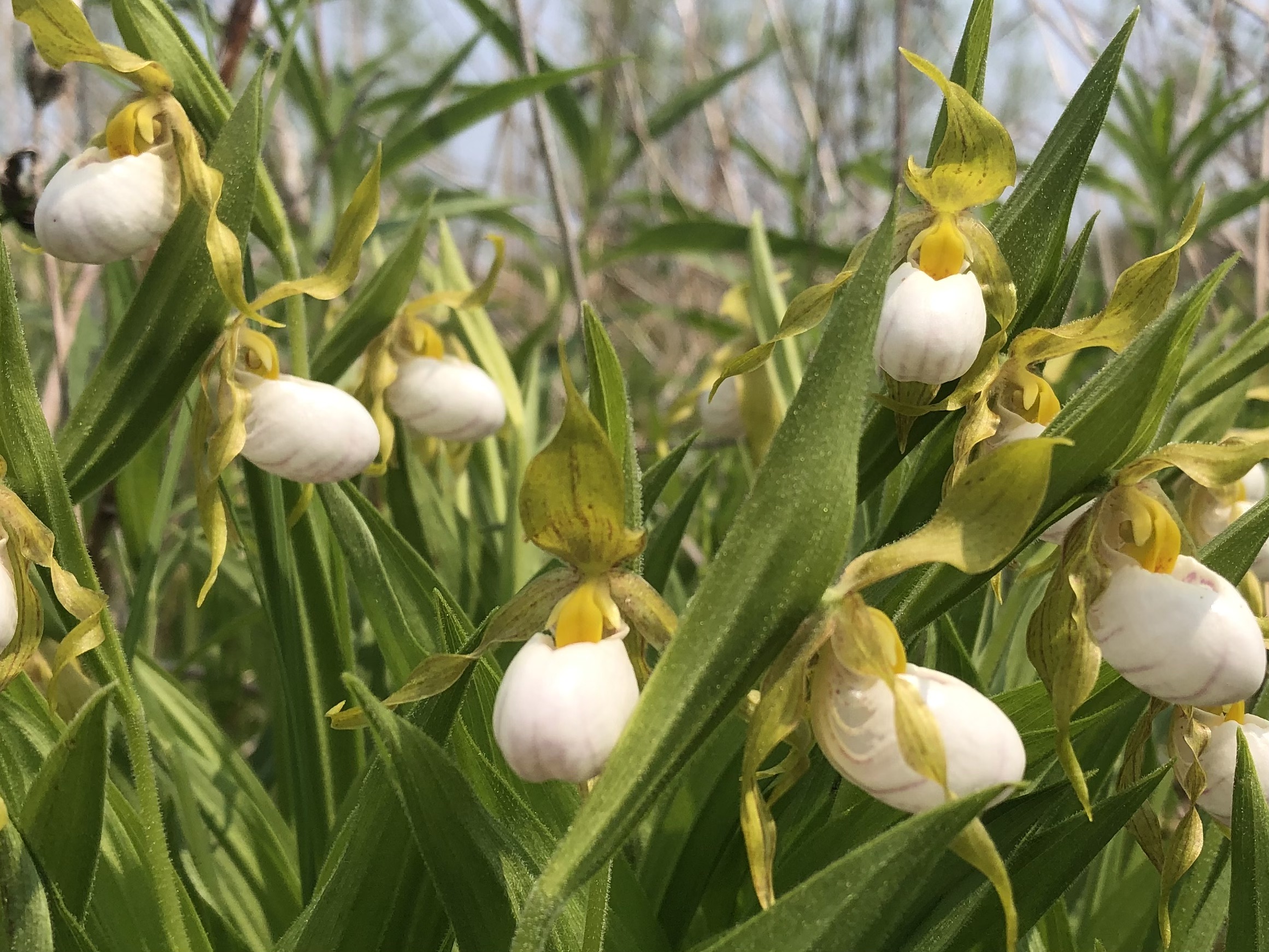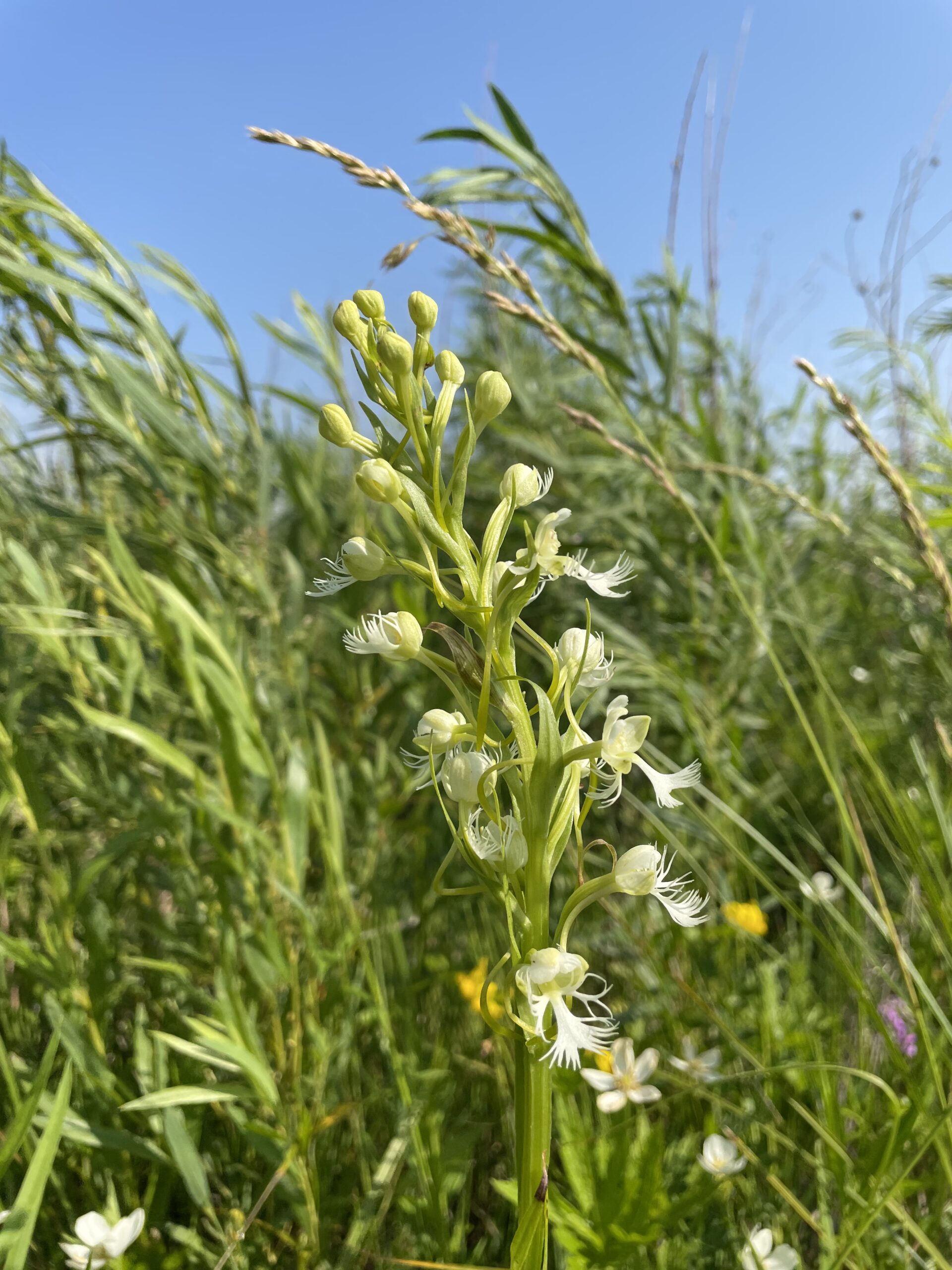
I have always shied away from the sedge family (Cyperaceae), spotting them on almost every walk through woodlands, prairies, wetlands, or neighborhoods. It would usually just be a passing comment to my partner: “Look, another sedge, and another, and another,” without giving them the attention they deserve. Cyperaceae is one of the most successful and species-rich flowering plant families in the world, explaining their presence in nearly every type of habitat. If you are a fan of water chestnuts, you ought to know that you are actually eating a corm of a sedge (Eleocharis dulcis) – pretty neat! Carex, the largest genus in this family, serves as an important ecological component of wetlands and wet prairies, making them crucial for restoration purposes. As a result, they comprise over 50% of our target species list. This group is notoriously difficult to identify, but with some time, head-scratching, and magnification, it’s not all that bad. I extend a special thanks to the botanists at Midewin (Michelle, Jen, Eric, Grant, and Anna) who have willingly shared their knowledge and provided helpful resources to enhance my understanding of this group. Taking a closer look at this diverse and often overlooked family has opened my eyes to its significance and beauty in the landscape.



The eastern prairie white-fringed orchid (Platanthera leucophaea) was once abundant throughout its range. However, the conversion of its habitat, from wet to mesic prairies, into crop land or pasture, has led to a significant decline in this species, as well as in many others. During our monitoring efforts, we had the opportunity to hand-pollinate the flowers, aiming to improve the quality and quantity of seeds. Carefully gathering pollinia on toothpicks at one site, we transferred them to plants at another site. The only successful pollinators of the eastern prairie white-fringed orchid are nocturnal hawkmoths. Despite the presence of these pollinators, the populations of these orchids remain small and fragmented so human intervention is necessary. To enhance genetic diversity, pollen is transferred from one subpopulation to another. In extreme cases, it is even shipped across the Midwest to ensure the success of this species across its entire range.


